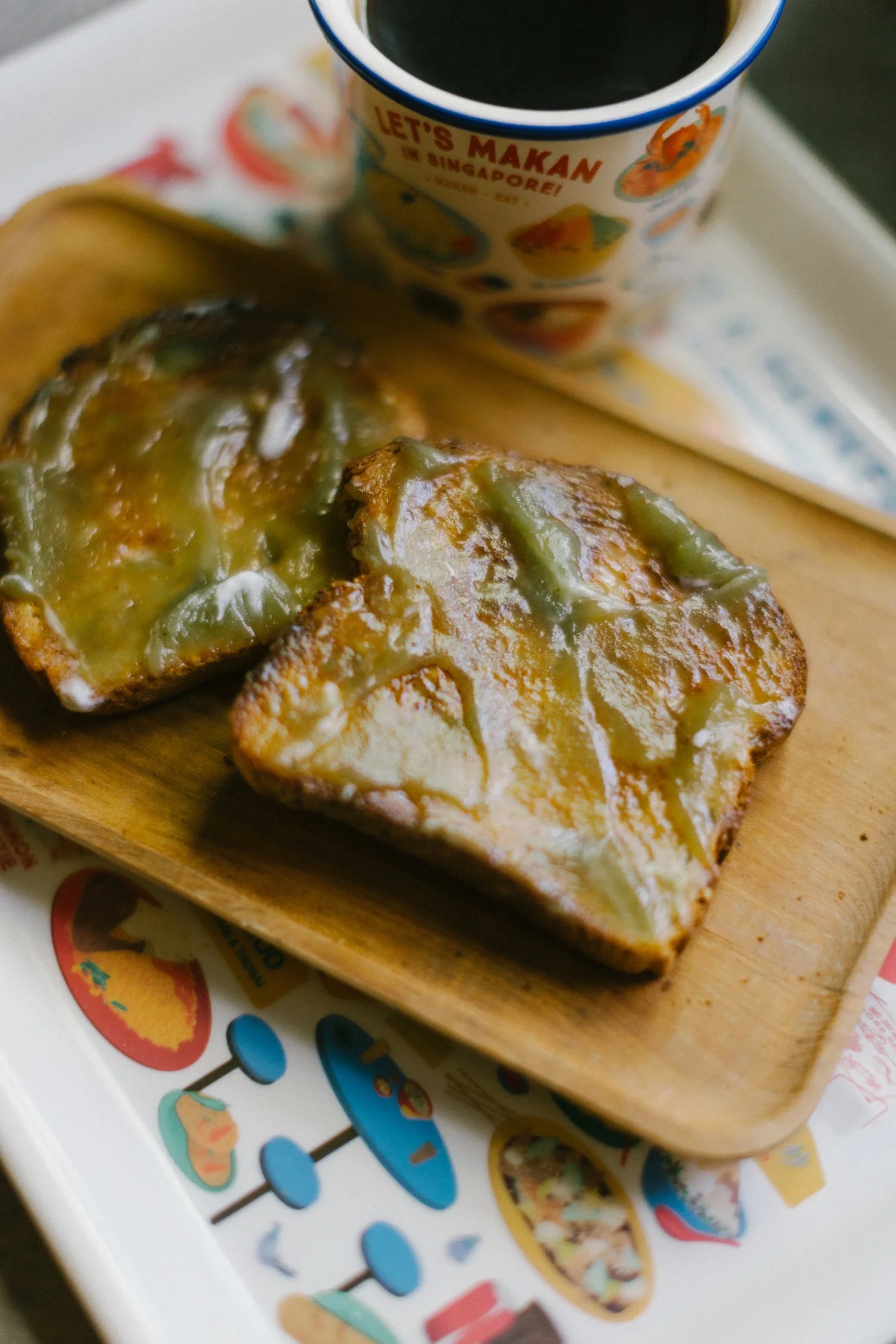Kopi & Kaya
We recently launched our summer drinks at our cafes, and this year, we decided to bring back one of our all-time favorites: The Kopi & Kaya. It’s been a few years since we’ve had it on the menu, and we’ve gotten a lot of questions about it—mostly, what is kopi and what is kaya?
My first introduction to kaya came when I was dating Stefan, who is Singaporean, and had just moved to the States from a couple of years living in Singapore. He told me about a green jam. I grew up enjoying fruit jams on toast—strawberry, lingonberry, apricot, fig, etc. I think the only green jam I knew of was a jalapeno jam I once had on a charcuterie board. The thought of sweet green jam did seem strange, but the first time I tasted it, I was totally sold. I don’t think I’m alone in this love-at-first-taste relationship with kaya.
What is Kopi?
Kopi just means coffee. There, that was easy.
In Singapore, you would order kopi at the local kopitiam, or coffee shop/stand, just like you would here in the States. There are, of course, regional norms that differ from here—like, for instance, often serving coffee in bags rather than cups.
What is kaya?
Kaya is a greenish-yellow sweet jam made primarily from coconut, eggs, and pandan leaves. As an egg-based jam, it has a custard-like richness that is quite unique from the more popular berry preserves we’re accustomed to in the West. This delicious jam is often served on buttered toast and taken with coffee, hence kopi and Kaya. Kaya toast itself is such a popular breakfast in Singapore that countless toast restaurants can be found in malls, on street corners, and in food courts. As an American visiting, I felt like Kaya toast to Singapore was almost like donuts to America. Here in the States, we have donut shops everywhere, and everywhere there is a donut shop, there is also coffee served. That’s really what it felt like in Singapore: Kopi & Kaya everywhere.
Where did Kaya come from?
The origins of kaya jam are a relative mystery. It seems generally agreed upon that kaya was an adaptation of another jam—European or Portuguese, most likely—inspired by foreign influence but created anew with ingredients local to South East Asia. One explanation from a Singapore government source states that,
“Some sources also credit early Hainanese immigrants with developing kaya as the spread that is eaten on toast. When Hainanese immigrants first arrived in Singapore in the 19th century, many of them worked as cooks on board British ships, in British homes, or in hotels run by Europeans. As competition for domestic employment increased and more British left Singapore in the early 20th century, many of these Hainanese immigrants began establishing their own businesses selling food in kopitiam (Hokkien for “coffee shop”). Drawing from their experience working for Europeans, they adapted Western-style, fruit-based jams to create kaya, and developed kaya toast based on the original British breakfast.”
Although the curiosity burns, it seems appropriate for a place like Singapore—the ultimate melting pot country—to have its central breakfast dish be a mysterious combination of influences. Today, kaya toast is truly a staple across the island.
Tala’s Take
We’ve brought this classic combination together into one cup. With a delicious house-made syrup combining coconut and pandan, steamed milk, and—of course—espresso, this seasonal latte is the next best thing to kaya toast and coffee.
Joanna Tong
Joanna is one of the owners here at Tala, heading up Operations and Strategy. Born and raised in Minnesota, she moved to Illinois in 2014 with no intention of staying long-term until the idea of Tala came to light. When not in the office or the cafe, you can find her in a forest preserve enjoying the outdoors or at home hanging out with her cat.







